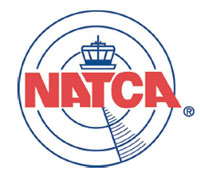Sat, Jan 30, 2010
NATCA: Safety Becoming An Issue As Errors Rise
 The number of fully trained and
certified air traffic controllers at Southern California Terminal
Radar Approach Control (TRACON), the nation's
busiest FAA air traffic control facility that handles the
climb and approach phases of flight, has fallen 26 percent in the
last six years, according to new staffing information released
today by the National Air Traffic Controllers Association
(NATCA).
The number of fully trained and
certified air traffic controllers at Southern California Terminal
Radar Approach Control (TRACON), the nation's
busiest FAA air traffic control facility that handles the
climb and approach phases of flight, has fallen 26 percent in the
last six years, according to new staffing information released
today by the National Air Traffic Controllers Association
(NATCA).
In 2004, SoCal TRACON was staffed with 239 fully trained and
certified controllers (called "CPCs" for Certified Professional
Controllers), with seven more in training. The total fell to 217
CPCs in 2005 and 199 CPCs in 2006, with 23 trainees. Today, the
total stands at 176 CPCs, with 82 trainees, many with no prior FAA
or military controller experience, which NATCA says puts them at a
disadvantage for successful training at SCT."Asking a new trainee
with no prior controller experience to make it here is like asking
a person with no flight experience to fly Boeing 747s,"
SoCal TRACON NATCA Facility Representative Mel Davis said. "It's
possible, and we have some success stories, but what we really need
are more experienced controllers to transfer here. The problem
facing the FAA is trying to get these experienced veterans to leave
their short- staffed facilities to come to another short-staffed
facility, which leaves us in a perilous position."

TRACON Facility File Photo
The FAA's local top management official at the facility issued a
memo last Friday mandating the use of an untested piece of
equipment designed to measure spacing between planes, in response
to what he called an "increase in 'Losses of Separation' in the
last month." The examples included an incident Jan. 19 in
which an American Airlines regional jet came within three miles of
a Boeing 767 that was on its way to land at LAX. FAA rules require
five miles behind large jets such as the 767 to protect against the
effects of wake turbulence.
"The bottom line," concluded Davis, "is we need more experienced
controllers to come to SoCal TRACON, we need more space to
accommodate them and we need updated equipment to train them."
More News
He Attempted To Restart The Engine Three Times. On The Third Restart Attempt, He Noticed That Flames Were Coming Out From The Right Wing Near The Fuel Cap Analysis: The pilot repor>[...]
Make Sure You NEVER Miss A New Story From Aero-News Network Do you ever feel like you never see posts from a certain person or page on Facebook or Instagram? Here’s how you c>[...]
From 2009 (YouTube Edition): Leading Air Show Performers Give Their Best Advice for Newcomers On December 6th through December 9th, the Paris Las Vegas Hotel hosted over 1,500 air >[...]
Aero Linx: NASA ASRS ASRS captures confidential reports, analyzes the resulting aviation safety data, and disseminates vital information to the aviation community. The ASRS is an i>[...]
“For our inaugural Pylon Racing Seminar in Roswell, we were thrilled to certify 60 pilots across our six closed-course pylon race classes. Not only did this year’s PRS >[...]
 NTSB Final Report: Rutan Long-EZ
NTSB Final Report: Rutan Long-EZ ANN FAQ: Turn On Post Notifications
ANN FAQ: Turn On Post Notifications Classic Aero-TV: ICAS Perspectives - Advice for New Air Show Performers
Classic Aero-TV: ICAS Perspectives - Advice for New Air Show Performers ANN's Daily Aero-Linx (06.28.25)
ANN's Daily Aero-Linx (06.28.25) Aero-News: Quote of the Day (06.28.25)
Aero-News: Quote of the Day (06.28.25)




